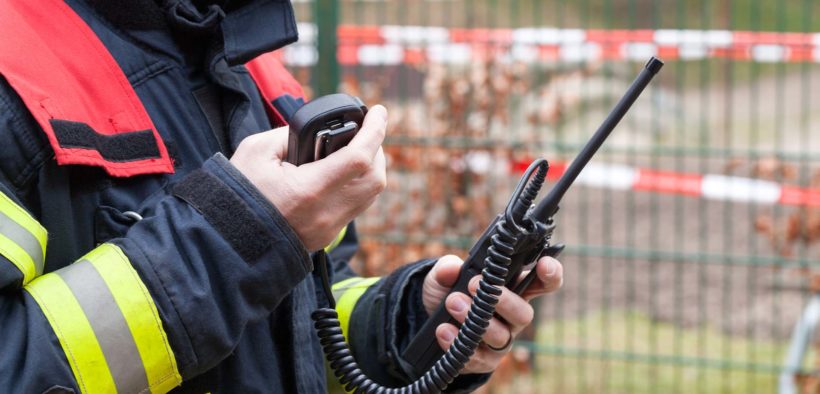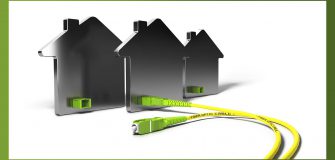Designing Public Safety Networks with iBwave
Share

iBwave is well known in the in-building DAS and WiFi network design space, but did you know that we’re also the leaders in in-building design for public safety networks?
In this post, we’re going to go into detail on designing public safety networks, how they’re different than traditional network designs, and how iBwave provides solutions for each stage of the PS design life cycle.
What is a Public Safety Network?
Public safety networks are specialized communication systems used in the event of emergencies. They’re a necessity for communication between first responders, fire fighters, and emergency workers. And, perhaps most importantly, they’re a legal requirement in many countries around the world.
In an emergency, having a working, optimized public safety network has the potential to save lives.
At present, there’s no centralized federal entity that regulates building codes for public safety network requirements. But there are several not-for-profit organizations setting a benchmark for municipalities to use as a guideline for designing public safety networks. The National Fire Protection Agency (NFPA) and International Fire Code (IFC) are two of the more influential of these entities and have in recent years become the standard for defining optimal public safety network deployment.
How is designing a Public Safety DAS different than that of a Cellular DAS?
Unlike traditional Cellular DAS designs, public safety networks require access in infrequently used areas. Elevators, fire escapes, fire pump rooms, and emergency exits all require public safety network access, as these are the areas that first responders communicate from in the event of a crisis.
Public safety networks also require specialized equipment (i.e. heat resistant cables, backup generators, etc.) that aren’t as readily available as traditional cellular DAS infrastructure. This means longer lead times and potential delays in network planning and deployment.
As mentioned above, in-building public safety networks typically adhere to guidelines outlined by the NFPA and IFC. Here are some of the most important protocols as defined by the two organizations:
- Equipment Enclosures: The NFPA and IFC specify that all equipment supporting the public safety network must be housed in NEMA-4 compliant enclosures.
- Signal Strength: The NFPA and IFC stipulate a minimum signal strength of -95 dBm to meet acceptable signal strength standards.
- Battery Backup: Equipment that supports the public safety system must be able to function for 24 hours on a backup battery.
- Fire Ratings: Cables connecting public safety electronic equipment must meet a two-hour fire rating.
How does iBwave help design public safety networks?
As the leaders in in-building wireless design, we’ve had a lot of experience finding the best ways to plan and deploy public safety networks that adhere to the NFPA and IFC standards. We’re in regular communication with the Safer Buildings Coalition and system integrators to ensure network designs meet the requirements of these organizations.
iBwave software solutions have built-in tools for each part of the design life cycle – from initial RF design to final acceptance testing. If your building requires public safety network access, you can be assured that your network design meets NFPA and IFC standards.
For instance, iBwave allows specific rooms in a floor plan to be designated as “critical.” This makes it easier for stakeholders to identify areas (i.e. emergency exit, control room, equipment room, etc.) of the design that will require special attention.
The software also allows you to display compliancy standards on output maps, so you can regularly monitor whether your network design is meeting these guidelines.
While NFPA and IFC standards are implemented directly into the software, there’s also an option to set custom compliancy requirements should your building or municipality require specialized design.
The compliancy report function will generate an easy to read document outlining whether your network design is compliant with the specifications you provide. This is an invaluable report for authorities with jurisdiction to approve or reject network designs based on public safety compliancy.
With a growing demand for in-building access to public safety networks, iBwave software is well equipped to handle future requirements and standards that may become the norm for network design. Our equipment database is constantly growing and includes many materials designed specifically for public safety networks. And with regular software updates, iBwave solutions are also well-equipped to handle any future toolkits that might be mandated for public safety.
Read more about solutions for designing public safety networks.
These are just a few reasons why iBwave are the leaders in public safety network design.
For more information about designing public safety networks, check out the webinar we held with the Safer Buildings Coalition and C2 Systems or read about our software by visiting the public safety page on our website.
Thanks for reading!
- Wi-Fi 6: The Key Features - December 6, 2019
- LOL OMG BBQ?! – Understanding Wireless Industry Acronyms - November 27, 2019
- Feature Spotlight: Optimized Inclined Surface Modeling - November 6, 2019


























